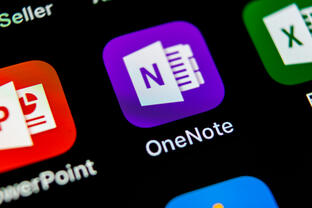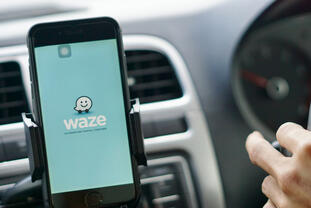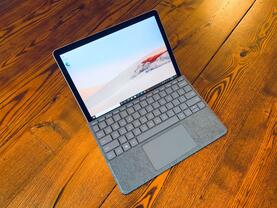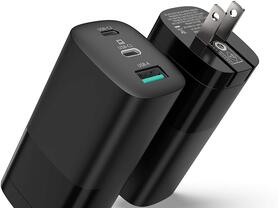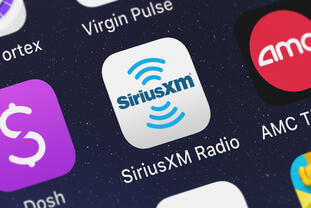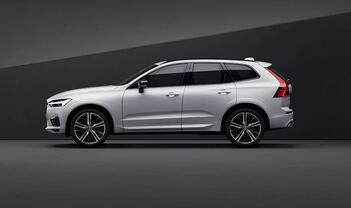Back before the turn of the century, my wife and I said goodbye to the Pacific Northwest. We moved to the great American Southwest, packing our two cats and a few boxes of our most precious worldly possessions into an SUV and driving about 1400 miles to our new home.
This summer, nearly a quarter-century later, we did it again, pulling up stakes and moving from Santa Fe, New Mexico, to Atlanta, Georgia. Coincidentally, that Southwest-to-Southeast move was also about 1400 miles, and we piled into an SUV surrounded by roughly the same number of boxes, but this time we had just one sweet, senior dog to keep us company on the long drive.
Despite the distance and driving time similarities, this year’s move was dramatically different from that long-ago adventure. The biggest changes, not surprisingly, came about because of advances in technology that made the whole process less stressful. Back then, if memory serves, we were probably rocking some sort of flip phone (mobile Internet was still the stuff you only read about in Wired magazine), with paper maps for navigation and CDs for entertainment.
How much of a difference has technology made? I’ve made a list of the gadgets, apps, and services that kept us on track.
OneNote
The process of moving involves dozens, maybe hundreds of tasks, big and small, and it helps to have a tool where you and your partner can build to-do lists, add notes, save receipts and appointment details, and check tasks off the list when they’re finished.
For our move, we used a shared OneNote notebook for just about everything, with separate sections for properties we were touring as part of our housing search, items we were planning to sell or give away, financial checklists for fees and deposits, more checklists for finding movers and contractors, and to-do lists for all the address changes we needed to file, as well as for relocation tasks like getting a new driver’s license and registering to vote.
OneNote has a full selection of mobile and desktop apps, so it’s easy to create or edit a list even on the go. Sign in with a free Microsoft account, and your notebooks are saved in OneDrive or use a paid Microsoft 365 account. Because changes to OneNote shared notebooks are synced in real-time, it’s easy to keep track of who’s done what and what still needs to be done.
Alternatives: Evernote‘s feature set is similar to OneNote’s; if you’re already comfortable with that app, it’s a perfect choice. For those who prefer a more streamlined way to share and sync task lists, look at Microsoft To-Do, which has versions for Windows, iOS, and Android, as well as a web-based interface.
Dark Sky app
Our drive took us from New Mexico through Texas and into Louisiana, Mississippi, and Alabama before we got to Georgia. Anyone who’s lived in any of those areas knows that summer means afternoon thunderstorms, occasional tornado warnings, and even the chance of a drenching from a tropical storm or the remnants of a hurricane.
To avoid getting into weather-related trouble as we drove, we used the hyperlocal forecasts provided by the Dark Sky app, now owned by Apple. I’d been disappointed in the app’s accuracy in our old neighborhood, but it turned out to be reassuringly accurate on our drive, allowing us to steer clear of one storm that looked like it would make for miserable driving.
Alternatives: After Apple bought Dark Sky in 2020, it quickly shut down all versions for non-Apple devices. If you’re using an Android phone, try Forecastie, an open-source app that draws from a similar database for hyperlocal weather reports and forecasts.
Waze
For the most part, we took our time with this cross-country trek, keeping each day’s drive time down to a reasonable five or six hours. Most of that mileage was on well-maintained interstate highways, which typically were uncrowded except when passing through large cities (like Dallas, Shreveport, Tuscaloosa, and Birmingham). In Texas, we found ourselves on a surprising number of state highways that passed through tiny towns where the speed limit suddenly dropped from 75 to 45 or even 35, allowing state troopers and local sheriffs to pick off out-of-state rubes like us.
Our best friend for both driving scenarios was Waze (which Google has owned since 2013). The app offered real-time traffic info, including suggestions for bypassing the highway construction we encountered outside Birmingham. Crucially, it also warned us of upcoming radar and speed cameras. We made it to our destination without any tickets.
Alternatives: One of the giants of navigation, TomTom, has finally built an alternative to Waze, but only for Android. (iOS support is not yet available in the U.S.) TomTom AmiGO offers a similar set of features and now works on Android Auto. We’ve planned some road trips later this year, and I look forward to trying it out.
Lenovo Yoga C630 or Surface Go 2
Mobile devices are great, but sometimes you need an honest-to-goodness PC’s wider screen and full keyboard. For this trip, I packed a Lenovo Yoga C630, which is powered by a Snapdragon 850 and runs Windows on Arm.
I paid about $600 for this machine about two years ago and have never regretted the decision. It’s a lightweight (2.6 lbs), a fully convertible laptop with a much-better-than-average keyboard, superb battery life (typically 9-10 hours of real-world use), and a cellular modem. I pay $20 a month, all in, for unlimited data from T-Mobile, and network speeds have been good or excellent everywhere we stopped.
Alternatives: Lenovo no longer sells the Yoga C630, and the Yoga 5G successor is only available as a subscription option in the UK. (For U.S. markets, the IdeaPad 5G is listed as “coming soon.”) I could have opted for a Surface Go 2, which uses an Intel x86 processor and also has a cellular networking option. It’s considerably lighter (1.2 lbs), and I recommend it for anyone who needs constant connectivity. For this trip, weight wasn’t that important, and I preferred the Yoga’s 13.3-inch display to the 10.2-inch display on the Surface.
Sisyphy multi-port charger
Every laptop I own now supports charging over USB-C via Power Delivery (PD), making it easy to find a small, versatile charger. I paid $30 for this multi-port model at Amazon and just kept it in my bag with a long USB Type-C PD cable, a USB Type-C to Lightning cable for my iPhone, and a USB Type-A cable with the dedicated charger for my Fitbit Versa 2 smartwatch.
Using either of the USB-C ports alone delivers a full 65W to my laptop. Charging multiple devices simultaneously drops the maximum output from USB-C port 1 to 45W, allowing the other two ports to share 15W of charging capability. My only complaint about this charger is its shape, which can cause it to fall out of a wall socket if plugged directly in. Next time I travel, I will probably bring a small extension cord or power strip so it can plug in vertically.
Alternatives: There are dozens of options for inexpensive and reliable replacement chargers from vendors you’ve never heard of. If you prefer a brand name, you can’t go wrong with Anker’s 2-port, 60W PowerPort Atom PD charger. Just make sure to bring along a USB-C-to-USB-A adapter.
YouTube TV
I hate watching TV in hotels. When you’ve grown accustomed to a full sound system or soundbar in the living room, those tinny TV speakers are painful to listen to. And where’s the pause button? Do you mean I can’t zip through commercials and rewind to see that last bit again? Watching TV in real-time is so 20th Century.
Fortunately, we switched from Comcast to YouTube TV in preparation for the move, so it was easy to watch our favorite shows on a laptop, using decent headphones. YouTube TV has a selection of 85 channels, access to broadcast network channels, and all the DVR features we’re used to. That hotel TV remote can stay in its “sanitized for your protection” sleeve, thanks.
Alternatives: Comcast subscribers can use the Xfinity Stream service, which offers on-the-go viewing and DVR access on the web and via mobile apps, with an interface that is every bit as frustrating as you would expect from Comcast. You can also try Sling TV, Philo, and FuboTV, all of which offer reasonable substitutes for video entertainment.
Sirius XM
My wife and I have smartphones stuffed with music and podcasts, but sometimes you just don’t want to be bothered with picking something from the collection and getting it to play. For those moments — OK, hours — there’s satellite radio, which is always available (except in a parking garage or other covered space). Just pick a channel and see what pops up.
I got one of Sirius XM’s aggressive discount offers right before we left and decided it was worth the $6 to try it out for a month. If I were a diehard sports or talk radio fan, it would be a slam dunk, but it was still worth it to hear some decent, commercial-free programming that included tracks we might not have heard otherwise. My only trepidation is getting through to Sirius XM if and when I decide to cancel. (This is one of those services you can sign up for online but can only cancel over the phone.)
Alternatives: I’ve never found anything that offers the satellite coverage that Sirius XM does, but there are plenty of streaming services that offer a mix of curated playlists and podcasts. If you only plan to listen when you’re in range of cellular service, consider TuneIn, which has an extensive selection of live sports, news, curated music, podcasts, and more than 120 000 streaming radio stations.
Volvo
We’ve had our 2021 Volvo XC60 for nearly eight months, but thanks to the pandemic, this is the first time I’ve been able to take it on the road for more than a 50-mile jaunt. Volvo has a well-earned reputation for safety, and I have to say it was eye-opening to see what all those sensors were capable of:
Lane Keeping Assistance, which gently nudges the car back into its lane if you accidentally allow it to drift out of your assigned laneBlind Spot Warning and Cross Traffic Warning, which beeps insistently if you’re too close to a nearby object in any direction; Adaptive Cruise Control (my favorite), which maintains a constant speed and separation from traffic ahead, managing the braking and acceleration smoothly.
Thankfully, we have yet to experience the Automatic Emergency Braking options in action.
It’s not exactly a self-driving car, but these features are effective and definitely reduce the mental stress of driving. It’s hard to appreciate their value until you experience them firsthand.
Alternatives: An increasing number of vehicles are adding advanced safety features like these. Consumer Reports has an excellent “Guide to Cars With Advanced Safety Systems,” which has a good explanation of the most popular technologies and which models offer them as standard or optional features.
